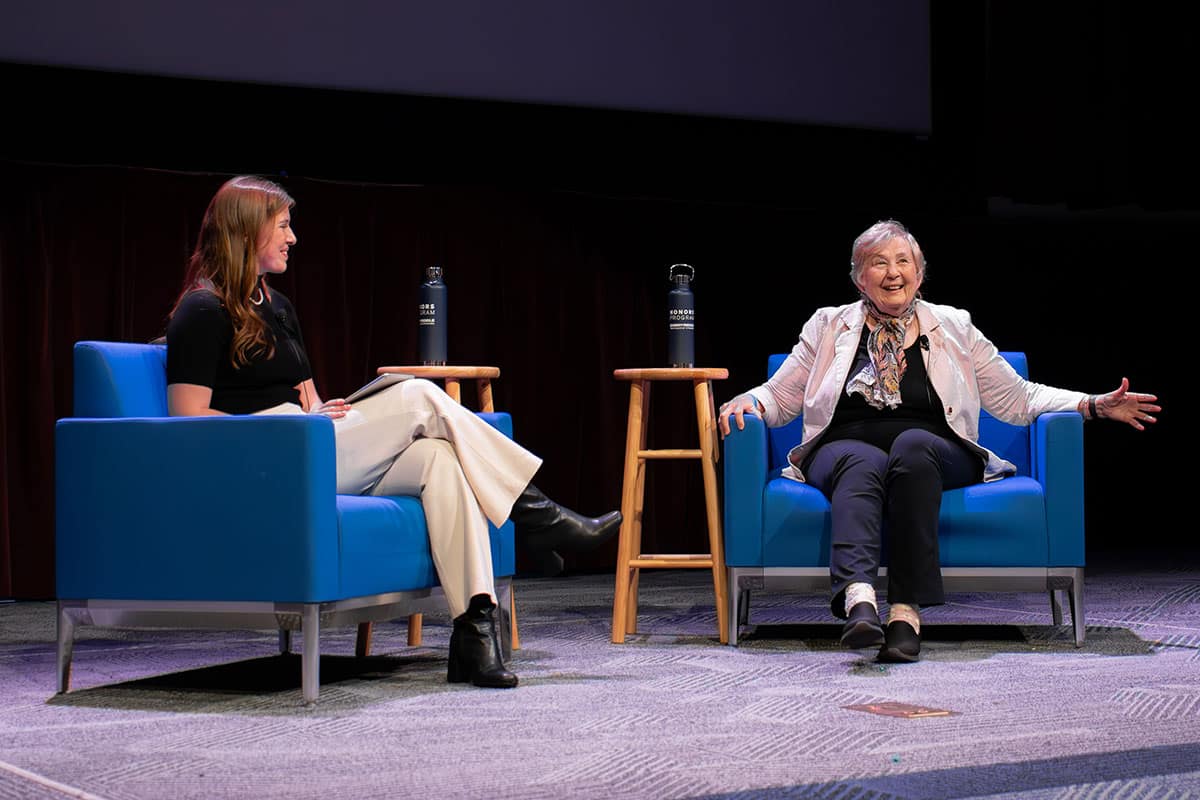Trailblazers on NASA’s Apollo Moon Missions Share Insights With Students

Students at Embry-Riddle recently had the opportunity to learn from two critical members of the U.S. Apollo moon missions: Bob Nance and Frances “Poppy” Northcutt.
Both speakers offered rare glimpses into these historic missions during talks at the Daytona Beach Campus. They also explored their unique experiences with NASA, sharing valuable advice with students who aspire to follow similar paths.
Nance, who played important roles in the Apollo 11 and 13 missions, said he knew he wanted to be part of America’s mission to the moon when he was a junior in high school. But he later discovered that his B average in college would prevent him from applying for his dream job.
Fortunately for him, astronaut John Young, whom Nance had met at a campus American Institute of Aeronautics and Astronautics event, suggested that NASA hire Nance.
“I was hired for my dream job in 1967 without even applying,” said Nance, during a Nov. 8 talk at the Daytona Beach Campus, where he was a guest of the Society of Space Professionals, a student-led organization.
Nance shared insights from his NASA career with students, highlighting the methods and fledgling technologies NASA used to achieve its mission objectives.
Nance, the lunar module propulsion flight coordinator on Apollo 11, offered a comprehensive look at the moon landing, including the mechanics behind touching down on the lunar surface and the scientific discoveries that followed.
“It was a spiritual experience,” Nance ultimately said of the moon landing.

Bob Nance, the lunar module propulsion flight coordinator on Apollo 11, presents to a crowd of Embry-Riddle students, faculty and staff. (Photo: The Avion/A. Akie Oleszewsk)
A Fearless Career
Northcutt, the first woman to hold an operational support role in NASA’s Mission Control Center, said she hopes that one word will define her legacy: “Fearless.”
Over the course of her career, Northcutt supported the Apollo 8, 10, 11, 12 and 13 missions. She began her career as a “computress” with TRW, an aerospace contractor, and quickly advanced to the Mission Planning and Analysis Room at the Mission Control Center.
During her time with NASA and TRW, she helped to design Apollo 8’s return-to-Earth trajectory and was part of the team that rescued the Apollo 13 crew, focusing on the maneuvers that returned them safely to Earth. She later received a Presidential Medal of Freedom for her work on Apollo 13.
At a Nov. 19 fireside chat on the Daytona Beach Campus, she touched on her groundbreaking work at NASA, her decision to begin a second career, her social advocacy and more. The chat was part of the Honors Program Seminar Series and was moderated by Aeronautical Science and Honors Program student Madison Seymour.
Northcutt spoke to students about her very first day at NASA.
“I was not aware that I was the first woman the first day I walked in over there,” she said. “But after I walked in, I became aware that I was the only woman.”
That early experience shaped her involvement in the women’s rights movement and her legal work with discriminatory laws.
She offered this advice to students who wished to follow in her footsteps: “Don't let the fact that you're not the world's greatest expert keep you from getting up and speaking out about something.”
